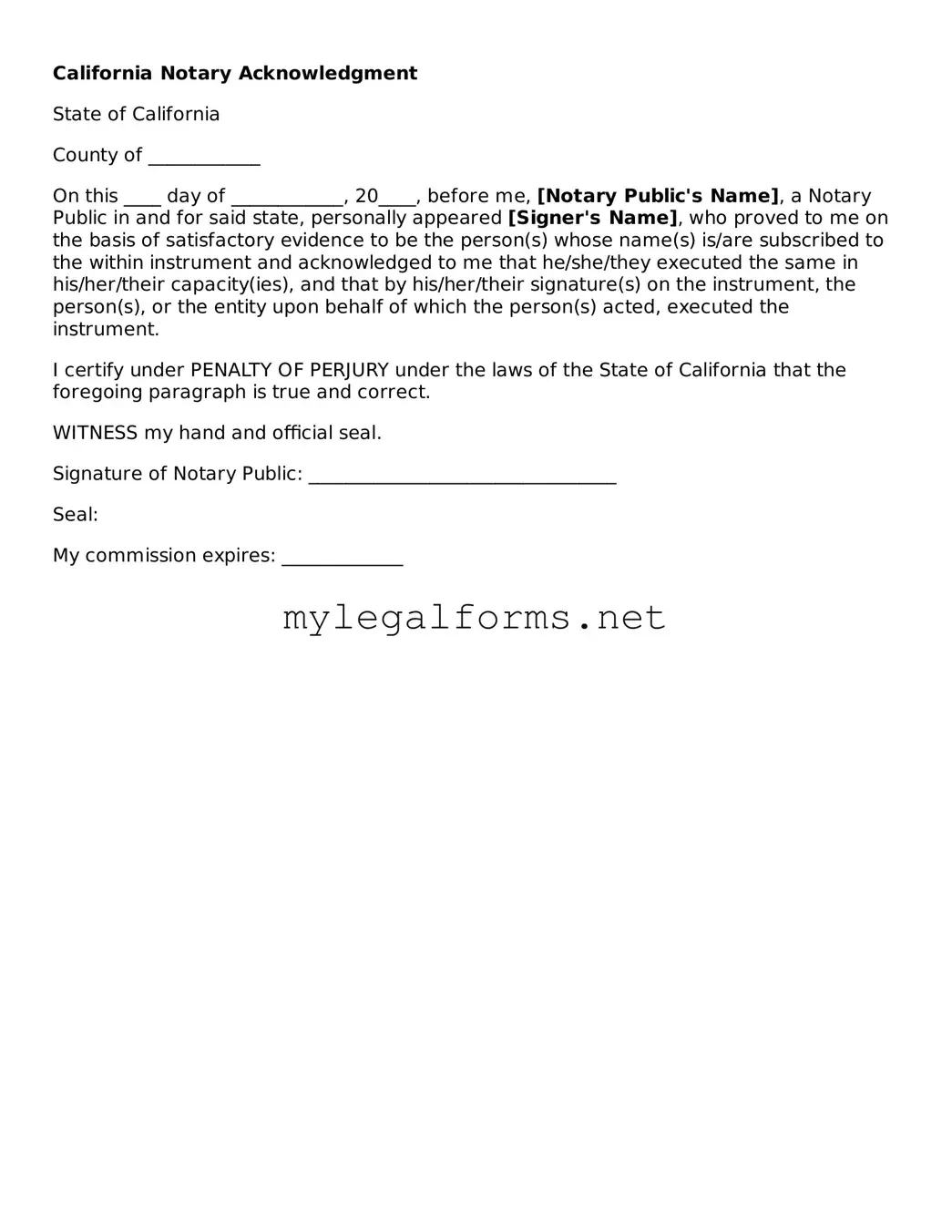Filling out the California Notary Acknowledgment form requires attention to detail. One common mistake is failing to include the correct date. This is crucial because the acknowledgment must reflect the actual date when the notary performed the service. If the date is incorrect, it could lead to complications in verifying the document's authenticity.
Another frequent error is neglecting to sign the form. The signer must provide their signature in the designated space. Without this signature, the acknowledgment is incomplete and cannot serve its intended purpose. It’s essential for the signer to be present during the notarization process to ensure their signature is valid.
People often forget to check the identity of the signer. The notary public must verify the identity of the individual signing the document. Acceptable forms of identification include a driver's license or a passport. Without proper identification, the notary cannot proceed, rendering the acknowledgment invalid.
Some individuals mistakenly use the wrong type of acknowledgment. California has specific language that must be included in the acknowledgment. If the notary uses a different format or omits necessary components, the document may not hold up in court. It’s important to use the state-approved wording to avoid any issues.
Another mistake involves not providing the correct venue. The acknowledgment must include the county where the notarization takes place. Omitting this information can lead to confusion about the document's origin and may affect its enforceability.
Additionally, many people overlook the importance of checking for legibility. The information on the form must be clear and easy to read. If the handwriting is messy or the print is smudged, it could create problems later on. Ensuring clarity is vital for the document’s acceptance.
Notaries sometimes forget to include their official seal. The seal is a critical element of the acknowledgment, serving as proof that the notary is authorized to perform such services. Without the seal, the document may be deemed invalid, which can have significant repercussions.
In some cases, individuals provide incomplete information about the signer. The acknowledgment requires specific details, such as the signer’s name and address. Missing this information can lead to challenges in identifying the signer later on, which can complicate legal proceedings.
Lastly, people may not realize that the notary must complete the acknowledgment in person. Attempting to notarize a document remotely or without the signer present can lead to serious legal issues. The notary's role is to witness the signing, and any deviation from this process can invalidate the acknowledgment.
